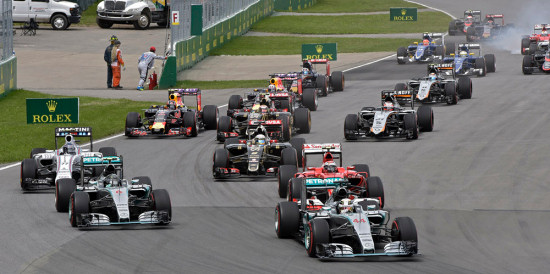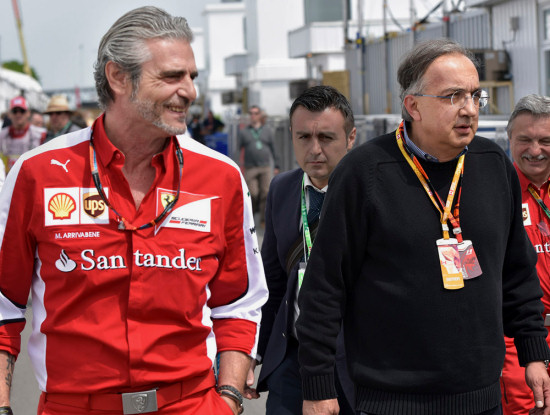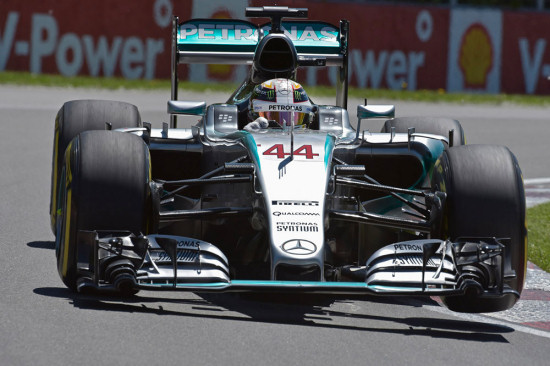The Way It Is/ Formula 1 searches for its identity & futureby Gordon Kirby |
 Last October I wrote in this space about the struggles that each of Formula 1, NASCAR and IndyCar are facing with declining TV audiences and overall popularity, especially among the much desired youth market. Each of these categories have been immersed for some time in fierce internal debates about what's right or wrong with their technical formula or 'the show' they're putting on.
Last October I wrote in this space about the struggles that each of Formula 1, NASCAR and IndyCar are facing with declining TV audiences and overall popularity, especially among the much desired youth market. Each of these categories have been immersed for some time in fierce internal debates about what's right or wrong with their technical formula or 'the show' they're putting on.
After dabbling with KERS for a few years F1 adopted a new all-singing and dancing energy recovery formula last year in company with a smaller, lower-revving turbo V6. The new formula also made a useful stab at reducing downforce while increasing torque and power. Some people like the new formula, some hate it, as they do other things like DRS which many feel is too much of a contrivance. But, like it or not, there's no doubt F1 will continue to push more and more in the same direction of energy efficiency and stage-managed rules. During last weekend's Canadian GP at le Circuit Gilles Villeneuve in Montreal--one of my favorite races of the year--I was able to take in both the pleasures of F1 and the ever-deepening debate about what its identity should or shouldn't be and what might be the right way forward for running and governing F1.  © Gary Gold Nobody else was in their class in Montreal. The Ferraris looked best of the rest, but weren't quite as smooth as the Mercedes. Both the Red Bulls and Toro Rossos looked pretty good although nothing like as silky smooth as the Mercedes. Romain Grosjean and Nico Hulkenberg were able to produce some good lap times in their respective Lotus and Force India chassis but both cars looked twitchy and difficult to drive. Nor did the pair of Williams look as good as expected, appearing to lack rear end grip or traction. Then there were the McLaren-Hondas which didn't look very good at all on turn-in and needed healthy doses of lock to get them through any corner. Both Alonso and Button struggled to hit their marks and produce consistent laps while the exhaust note from Honda's engines sounded unconvincing replete with an unpleasant metallic noise from the energy recovery systems under initial hard acceleration. Without doubt the best F1 cars are beautifully built and presented and they are impressive to watch, but equally without doubt there are too few of them. As you walk down the grid the field gets very thin very quickly and if it's to continue to live up to its name of Grand Prix racing F1 must find a way to build and develop more quality teams and cars. Ilmor co-owner and engine designer Mario Illien has almost forty years of experience in F1 and Indy car racing and is working for Renault these days on improving their F1 engine and energy recovery systems. "I find the rules in Formula 1 very interesting," Illien says. "From an engineering standpoint it's very interesting, but it's way too expensive and unnecessarily expensive. It's killing everybody. There is a sound issue on top of that, but I think that's a secondary issue. "They've got to get the cost under control. You look at the Formula 1 cars today and most of them have no sponsorship. Look at the McLaren. Ron's road car is more prominent than his race car. I don't know how he's financing the F1 team. It's not sustainable for Ron or any of the smaller teams. You cannot have small teams paying $20 or $25 million for an engine year after year. They just can't afford it." Indeed, it's a salutary fact that Marlboro remains the biggest sponsor in Formula 1 recently completing a new multi-year deal with Ferrari worth $90 million per year. Those are big numbers for a product that's theoretically banned from motor sport but when you get beyond the likes of Red Bull, Petronas, Mercedes Benz and Santander the collection of big buck sponsors in F1 today falls off sharply. Last Friday in Montreal half a dozen F1 team technical directors discussed F1's attempts to establish a plan and formula for the future. Manor Marussia's Graeme Lowdon talked about the frustration he's experienced over the past year as a representative of one of six teams participating in F1's Strategy Group meetings.  © Gary Gold "The idea of having a group to help with that process is a good idea but there doesn't seem to be a strategy that's come out of the Strategy Group and therefore it's not working. I'm not suggesting there should be no Strategy Group. In fact, actually the reverse. It's a very, very difficult task, but I think it's incredibly important because it could set the blueprint for this industry and the sport that we all love to grow. I think that's a task that's worth engaging in." Lotus F1's Matthew Carter agreed with Lowdon's assessment. "I agree with everything Graeme says," Carter remarked. "There needs to be some form of strategy group. There needs to be some form of strategy for the sport in general. "However, my personal opinion is that the composition and the way that the Strategy Group is set up doesn't work. There's six teams there that each have a vote and there's six teams there that have completely different agendas. Therefore, to get anything through that forum is impossible. I sat there for hours and hours listening to debates and nothing coming to the end of it. "What the answer is I genuinely don't know. I think there needs to be some form of governance and there needs to be a strategy. How they go forward with that, I don't know." In recent weeks an F1 fan survey has produced more than 200,000 responses from fans in almost 200 countries. Many people believe the FIA will do little more than pay lip service to the survey but Mercedes' Paddy Lowe said F1 must be more responsive to its fans. "What's great about Formula 1 is the spectrum of spectator we have from the casual viewer through to the enthusiast who has a great hunger to understand all the technicalities," Lowe commented. "I think that's what makes the sport extremely rich and why it's been popular for so long. "I think the thing we've got to make sure of is that we keep giving the information to those people who want to understands the technicalities so they can feel involved. It's certainly something we can work harder on." Manor's Graeme Lowdon emphasized the importance of F1's vast worldwide agglomeration of fans. "The biggest asset Formula 1 has is its fan base," Lowdon said. "It's global and it's massive and it's the root of this entire sport. Everything channels from that so it's very important to understand what fans want, not just now but in the future, and how they would like to integrate and engage with the sport. Understanding what your ultimate customer wants is pretty fundamental in any business and I think ensuring that understanding what the fans want is increasingly important."  © Gary Gold "The subject of bigger wheels has been raised over the last five or eight years," Paddy Lowe commented. "But I think the broad consensus is that going to bigger wheels is not a good direction. Certainly from a grip point of view, it's not positive. Such tires will have a lower grip and the weight will go up considerably, so it's not an attractive direction performance-wise. I think we would intend to stick with the 13 inch wheels." Ferrari's technical director James Allison expanded on Lowe's comments. "The rim diameter is going to stay where it is but the width of the tire is probably still up for grabs," Allison said. "We're discussing what that ought to be along with all the other aspects of the rules for around that time. I would say that sooner the better would be good for things like that. "Tires are maybe the most complicated bit of the car and the bit of the car that we have the least data about because we're not allowed by regulation to test them either on the track or off the track. We have the data provided by the tire manufacturer but that's all, and you want that information good and early when you're designing a car, not just for the vehicle dynamics part of the car, but also tires are one of the biggest aerodynamic components of the car. So having in your wind tunnel tires of the appropriate shape, size and squashiness is a big deal. "So sooner the better from our point of view, but there's still time from where we are today. As long as we get on it from here, it will be fine." Many people inside and outside F1 believe its big wheel is unravelling. For years we've heard idle talk of creating new leadership for F1 and a proper system of governing the sport. In recent years this talk has intensified but nothing is likely to happen until after Bernie Ecclestone either relinquishes his grip on F1 or passes on. And what happens when that long anticipated crossroad arrives is anybody's guess. |
|
Auto Racing ~ Gordon Kirby
Copyright ~ All Rights Reserved |
